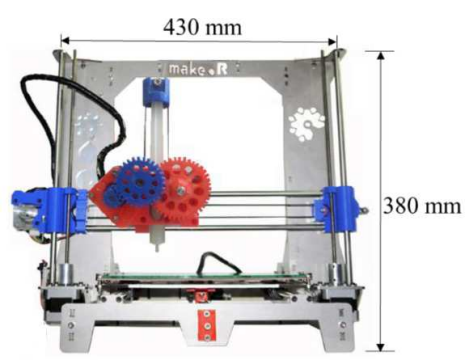In the recently published ‘3D printing of kaolinite clay with small additions of lime, fly ash and talc ceramic powders,’ Carlos F. Revelo and Henry A. Colorado explore the use of direct ink writing to create innovative ceramics, using a variety of inexpensive powders such as lime, fly ash, and talc—all commonly found in the ceramics realm—around the world.
Kaolinite is a clay material and is a natural mineral found in many countries. It is also commonly used as an additive in the following:
- Paper coating formulations
- Ceramics
- Plastics
- Adhesives
- Pharmaceuticals
The result of kaolinitic raw materials depends on the parent rocks, which may be based on granite, rhyolite, syenite, trachyte, gneiss or arcose. The researchers used kaolinite clays from Colombia, stating that they were most ‘abundant’ in the area.
“The world today demands new technologies for the production of ceramics that enable the industry to optimize the energy consumption and to minimize wastes by using them in other applications or processes,” stated the authors. “This is the case of using alternative ceramic materials like phosphates and geopolymers to hold large amount of wastes, traditional building materials with similar goals, or developing new manufacturing processes that use these unutilized materials.”
Using the three additives lime (CaO), fly ash (C type) and talc (H2Mg3 (SiO3) 4), the researchers realized that lime and talc turned into their hydrates forms: Ca(OH)2 and Mg3 Si4O10(OH)2. While investigating more about their performance in DIW printing, they also evaluated water ratio, sintering time, and contents—with all materials used in their most simple form possible.
Samples were printed for this research project as the team tested mechanical properties.
Lime and fly ash were found to have varying ‘skewness,’ with talc sample results indicating an almost symmetrical curve. All other corresponding and elemental data were demonstrated in the table below.
SEM-EDS elemental characterization of the raw powder additives and their combination with kaolinite clay
In evaluating temperature, the researchers found that as they increased, the diameter and height of the printed samples decreased. Shrinkage over diameter was ten percent less than over the height—which the authors attributed to anisotropy from the manufacturing technique. Densities and compress strength were presented as shown below. Fly ash was determined to be the best additive for the kaolinite clay regarding surface finishing. This additive also allows for added ease in 3D printing, resulting in more users—and as the research team notes, the potential for greater impacts in society.
“The samples were fabricated with water to clay ratios (W/C) between 0.68 and 0.72. The additives were tested in 3.0, 5.0 and 7.0 wt.% with respect to the clay contents and it was confirmed that the samples with 3 wt.% additives showed the best performances. The obtained results also showed that samples with 0.70 W/C ratio and fly ash as an additive were the best in terms of workability, mechanical properties and surface finishing,” explained the authors.
Fly ash was the best choice overall, which the researchers associated with shape, distribution, and chemical interaction. They found that while on its own there was not enough plasticity to produce structures strong enough to withstand being handled as well as drying, with the combination of clay they were able to print and produce complex samples.
“The process and materials presented in this research open up the possibility of traditional industries to really think in the implementation of additive manufacturing as a complement to traditional methods, which can also be an innovation line of the company. Moreover, the process and materials are adaptable to individuals,” concluded the researchers.
3D printing with many different types of clay has become increasingly popular for a range of purposes, from the creation of clay extruders to nanocomposites, and more. What do you think of this news? Let us know your thoughts! Join the discussion of this and other 3D printing topics at 3DPrintBoard.com.
[Source / Images: ‘3D printing of kaolinite clay with small additions of lime, fly ash and talc ceramic powders’]